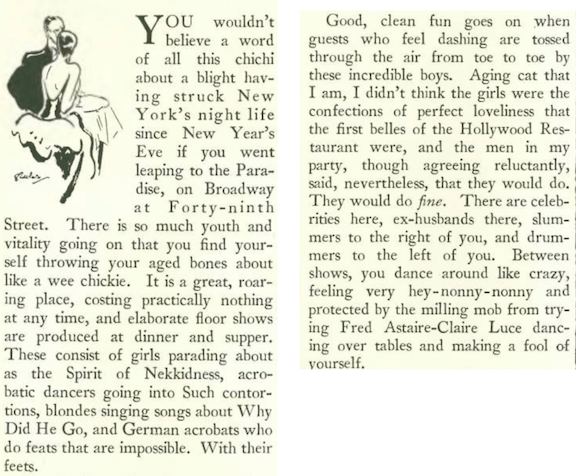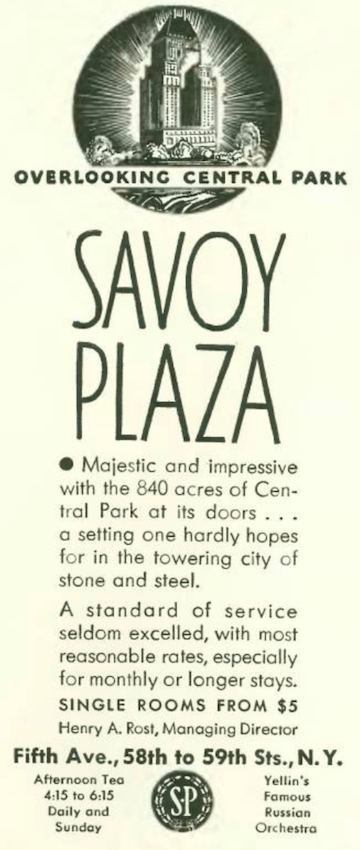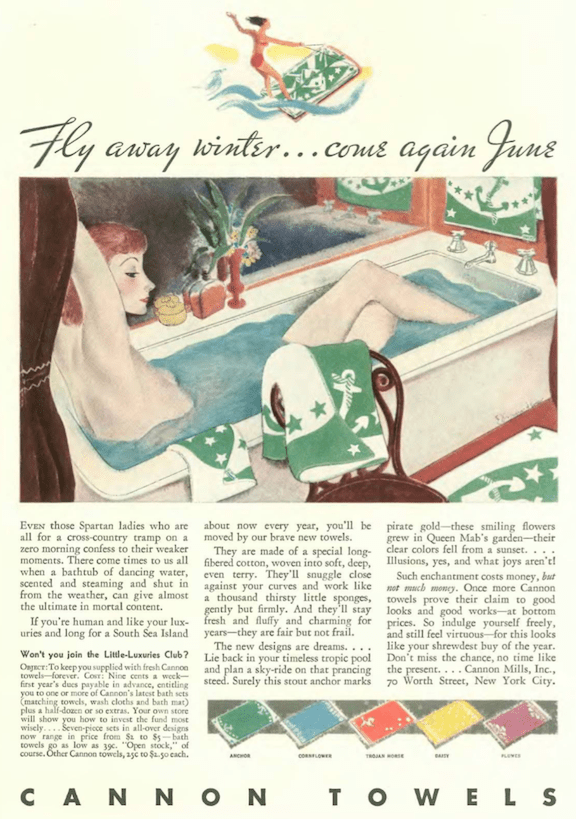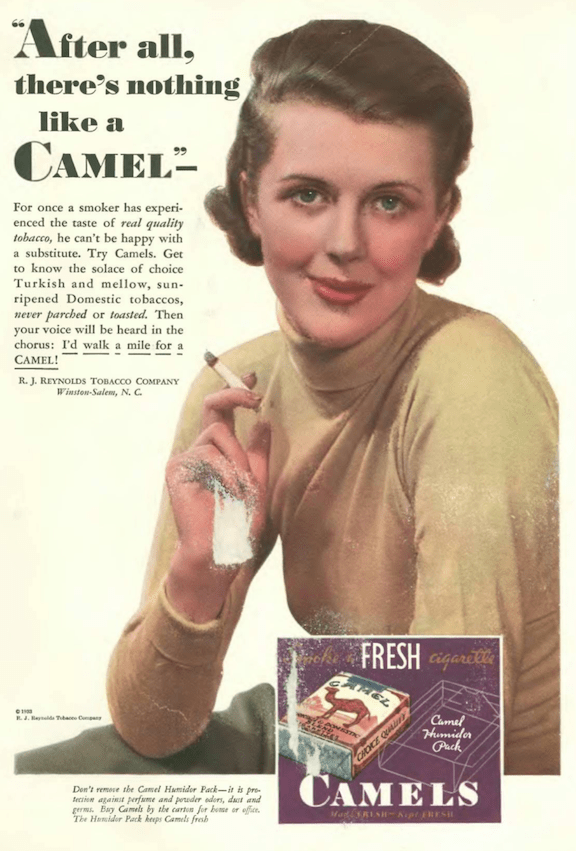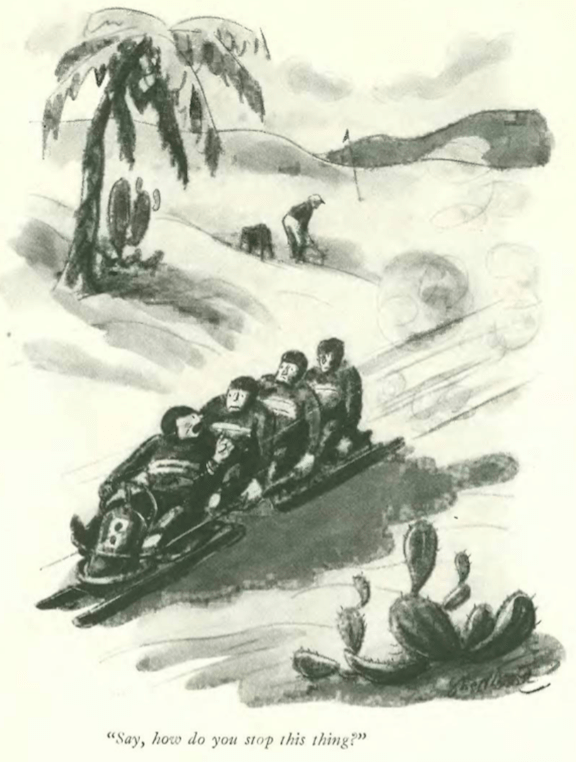Lois Long welcomed 1933 by venturing out into the New Year’s nightclub scene…

…where she encountered the new Paradise Cabaret Restaurant at Broadway and 49th, where there was no cover charge and not much covering the showgirls, either…
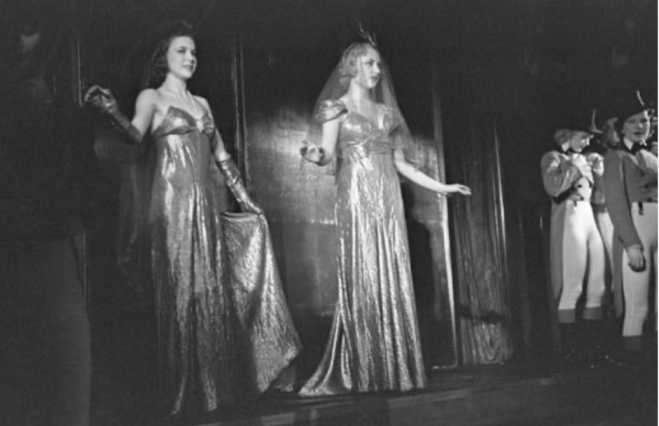


While Mann went on to become King Vitaman, another Paradise performer, 16-year-old Hope Chandler, found the love of her life while performing in next-to-nothing at the Paradise…

…namely the 22-year-old son of William Randolph Hearst, who spotted Chandler during one of his visits to the Paradise. David Whitmire Hearst married Chandler in 1938 and they lived happily ever until his death in 1986.

* * *
Tragic Opera
Yes, the lovers die at the end of Tristan und Isolde, but for New York opera buffs the real tragedy belonged to Samuel Insull (1859–1938), a Chicago utilities magnate responsible for building a new Chicago Civic Opera House in 1929. When Insull’s opera house went bust in 1932, the Met landed two of its principal stars. Robert Simon reported for The New Yorker:

Insull was a famed innovator and investor who was a driving force behind creating an integrated electrical infrastructure in the U.S. In 1925 he addressed the financial difficulties of the Chicago opera community with a proposal to build a skyscraper with an opera house on the ground floor — he thought the rental of office space would cover the opera company’s expenses. The building was completed in 1929 — the same year as the market crash — and suddenly his grand plan didn’t look so grand.
Then Insull’s companies went under, and he was charged with fraud and embezzlement. He fled to Europe, but in 1934 he was arrested in Istanbul and brought back to Chicago to stand trial. Although he was acquitted, he was left a broken (and broke) man, his $3 billion utilities empire in shambles.


* * *
From Land to Sea
The National Auto Show left town to be followed by the annual Boat Show at the Grand Central Palace, featuring boats that were priced to meet the needs of some Depression-era buyers:

* * *
From Our Advertisers
Yes, the boat show was in town, but automobile manufacturers were still making their points to potential customers including Chrysler, one of The New Yorker’s biggest advertisers in the early 1930s…here’s a two-page spread for the Dodge 8…
…Chrysler’s DeSoto line claimed a luxurious interior that would inspire even regular folks to put on the “haughty air” of a French Duchess…
…on the other hand, the folks at Cadillac went for understatement with this announcement of a limited edition V-16…
…with 16 cylinders under the hood, this thing could really tear down the road, but it was the Depression, and even though this edition was limited to just 400 cars, only 125 were sold…

…it really bothers me that the Savoy Plaza Hotel (1927) was knocked down in 1965 and replaced by the monolithic GM Building…and look, in 1933 you could get a single room for five bucks a night…
…maybe you’d rather take to the seas on the Hamburg-American Line…

…or you could chase away the winter blues in a steaming bath that the folks at Cannon Towels called “almost the ultimate in mortal content”…
…and no doubt a few lit up a Camel or two during their soak…note the tagline “I’d walk a mile for a Camel!”…it was a slogan the brand used for decades…
…I still remember these from when I was a kid…
…on to our cartoons, and we begin with William Crawford Galbraith, still up to his old tricks…
…Gilbert Bundy gave this exchange between old mates…
…Alan Dunn showed us what happens when you hire a chatty governess…
…in the spirit of the 2022 Winter Olympics, one from George Shellhase…
…and we close with James Thurber, and the trials of married life…
Next Time: Belle Geste…

